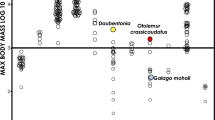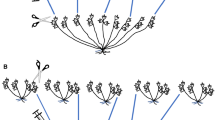Abstract
As neighbours become familiar with one another, they can divert attention away from one another and focus on other activities. Since familiarity is a likely mechanism by which animals recognise relatives, both kinship and prior association with conspecifics should allow individuals to increase foraging. We attempted to determine if the interference observed among conspecific foragers could be mitigated by familiarity and/or kinship. Because Pardosa milvina wolf spiders are sensitive to chemotactile cues deposited on substrates by other spiders, we used cues to manipulate the information available to focal spiders. We first verified that animals could use these cues to differentiate relatives and familiar conspecifics. We then documented foraging in the presence of all combinations of related and familiar animal cues. Test spiders were slower foragers, less likely to capture prey, and consumed less of each prey item when on cues from unfamiliar kin, but were faster and more effective foragers on cues from familiar non-kin. Their reactions to familiar kin and unfamiliar non-kin were intermediate. High foraging intensity on familiar cues is consistent with the idea that animals pay less attention to neighbours after some prior association. Lower foraging effort in the presence of cues from relatives may be an attempt to reduce kin competition by shifting attention toward dispersal or to provide increased access to prey for hungry relatives nearby. These findings reveal that information from conspecifics mediates social interactions among individuals and affects foraging in ways that can influence their role in the food web.



Similar content being viewed by others
References
Abrams PA (2010) Implications of flexible foraging for interspecific interactions: lessons from simple models. Funct Ecol 24:7–17. doi:10.1086/512688
Animal Behaviour (2013) Guidelines for the treatment of animals in behavioural research and teaching. Anim Behav 16:1–9. doi:10.1016/S0003-3472(14)00451-5
Anthony CD (2003) Kinship influences cannibalism in the wolf spider, Pardosa milvina. J Insect Behav 16:23–36. doi:10.1023/A:1022893127216
Balfour RA, Buddle CM, Rypstra AL, Walker SE, Marshall SD (2003) Ontogenetic shifts in competitive interactions and intra-guild predation between two wolf spider species. Ecol Entomol 28:25–30. doi:10.1046/j.1365-2311.2002.00486.x
Clutton-Brock TH, Lukas D (2012) The evolution of social philopatry and dispersal in female mammals. Mol Ecol 21:472–492. doi:10.1111/j.1365-294X.2011.05232.x
DeLong JP, Vasseur DA (2013) Linked exploitation and interference competition drives the variable behavior of a classic predator–prey system. Oikos 122:1393–1400. doi:10.1111/j.1600-0706.2013.00418.x
Dickey DA (2008) PROC MIXED: underlying ideas with examples. SAS Global Forum 2008, 16–19 March 2008, San Antonio, TX, USA, Paper 374-2008
Dukas R (2002) Behavioural and ecological consequences of limited attention. Philos Trans R Soc B 357:539–1547. doi:10.1098/rstb.2002.2063
Dukas R (2004) Causes and consequences of limited attention. Brain Behav Evol 63:197–210. doi:10.1159/000076781
Frommen JG, Zala SM, Raveh S, Schaedelin FC, Wernisch B, Hettyey A (2013) Investigating the effect of familiarity on kin recognition of three spined stickleback (Gasterosteus aculeatus). Ethology 119:531–539. doi:10.1111/eth.12091
Ganju J, Lucas JM (2000) Analysis of unbalanced data from an experiment with random block effects and unequally spaced factor levels. Am Stat 54:5–11. doi:10.2307/2685603
Gherardi F, Aquiloni L, Tricarico E (2012) Revisiting social recognition systems in invertebrates. Anim Cogn 15:745–762. doi:10.1007/s10071-012-0513-y
Griffiths SW, Brockmark S, Höjesjö J, Johnsson JI (2004) Coping with divided attention: the advantage of familiarity. Proc R Soc B 271:695–699. doi:10.1098/rspb.2003.2648
Gruter C, Leadbeater E (2014) Insights from insects about adaptive social information use. Trends Ecol Evol 29:177–184. doi:10.1016/j.tree.2014.01.004
Ha RR, Bentzen P, March J, Ha JC (2003) Kinship and association in social foraging northwestern crows (Corvus caurinus). Bird Behav 15:65–75
Hatchwell B (2010) Cryptic kin selection: kin structure in vertebrate populations and opportunities for kin-directed cooperation. Ethology 116:203–216. doi:10.1111/j.1439-0310.2009.01732.x
Hoefler CD, Carlascio AL, Persons MH, Rypstra AL (2009) Male courtship repeatability and potential indirect genetic benefits in a wolf spider. Anim Behav 78:183–188. doi:10.1016/j.anbehav.2009.04.012
Holling CS (1961) Principles of insect predation. Annu Rev Entomol 6:163–200. doi:10.1146/annurev.en06.010161.001115
Koetz AH, Westcott DA, Congdon BC (2007) Spatial pattern of song element sharing and its implications for song learning in Orthonyx spaldingii. Anim Behav 74:1019–1028. doi:10.1016/j.anbehav.2006.11.035
Luttbeg B, Schmitz OJ (2000) Predator and prey models with flexible individual behaviour and imperfect information. Am Nat 155:669–683. doi:10.1086/303344
Marshall SD, Rypstra AL (1999) Patterns in the distribution of two wolf spiders. Environ Entomol 28:1052–1059
Marshall SD, Walker SE, Rypstra AL (2000) A test for a differential colonization and competitive ability in two generalist predators. Ecology 81:3341–3349. doi:10.1890/001209658(2000)081[3341:atfadc]2.0.co;2
Marshall SD, Pavuk DM, Rypstra AL (2002) A comparative study of phenology and daily activity patterns in the wolf spiders Pardosa milvina and Hogna helluo in soybean agroecosystems in southwestern Ohio (Araneae, Lycosidae). J Arachnol 30:503–510. doi:10.1636/0161-8202(2002)030[0503:ACSOPA]2.0.CO;2
Marshall HH, Carter AJ, Ashford A, Rowcliffe JM, Cowlishaw G (2013) How do foragers decide when to leave a patch? A test of alternative models under natural and experimental conditions. J Anim Ecol 82:894–902. doi:10.1111/1365-2656.12089
Mateo JM (2004) Recognition systems and biological organization: the perception component of social recognition. Ann Zool Fenn 41:729–745
Mateo JM (2010) Self-referent phenotype matching and long-term maintenance of kin recognition. Anim Behav 80:929–935. doi:10.1016/j.anbehav.2010.08.019
Mathot KJ, Giraldeau L-A (2010) Within-group relatedness can lead to higher levels of exploitation: a model and empirical test. Behav Ecol 21:843–850. doi:10.1093/beheco/arq069
Melian CJ, Blado F, Matthews B, Vilas C, Gonzalez-Ortegon E, Drake P, Williams RJ (2014) Individual variation and diversity in food webs. Adv Ecol Res 50:207–241. doi:10.1016/B978-0-12-801374-8.00006-2
Muleta MG, Schausberger P (2013) Smells familiar: group joining decisions of predatory mites are mediated by olfactory cues of social familiarity. Anim Behav 86:507–512. doi:10.1016/j.anbehav.2013.05.040
Müller CA, Manser MB (2007) ‘Nasty neighbours’ rather than ‘dear enemies’ in a social carnivore. Proc R Soc B 274:959–965. doi:10.1098/rspb.2006.0222
Newey PS, Simon KA, Robson A, Crozier RH (2010) Weaver ants, Oecophylla smaragdina, encounter nasty neighbors rather than dear enemies. Ecology 91:2366–2372. doi:10.1890/09-0561.1
Oaten A, Murdoch WW (1975) Functional response and stability in predator–prey systems. Am Nat 109:354–367. doi:10.1086/282998
Okuyama T (2009) Local interactions between predators and prey call into question commonly used functional responses. Ecol Model 220:1182–1188. doi:10.1016/j.ecolmodel.2009.02.010
Okuyama T (2013) Consequences of variation in foraging success among predators on numerical response. Ecol Evol 3:4039–4043. doi:10.1002/ece3.772
Persons MH, Walker SE, Rypstra AL, Marshall SD (2001) Wolf spider predator avoidance tactics and survival in the presence of diet-associated predator cues (Araneae: Lycosidae). Anim Behav 61:43–51. doi:10.1006/anbe.2000.1594
Persons MH, Walker SE, Rypstra AL (2002) Fitness costs and benefits of antipredator behavior mediated by chemotactile cues in the wolf spider Pardosa milvina (Araneae: Lycosidae). Behav Ecol 13:386–392. doi:10.1093/beheco/13.3.386
Railsback SF, Harvey BC (2013) Trait-mediated trophic interactions: is foraging theory keeping up? Trends Ecol Evol 28:119–125. doi:10.1016/j.tree.2012.08.023
Roberts JA, Taylor PW, Uetz GW (2003) Kinship and food availability influence cannibalism tendency in early-instar wolf spiders (Araneae: Lycosidae). Behav Ecol Sociobiol 54:416–422. doi:10.1007/s00265-003-0646-8
Rypstra AL, Wieg C, Walker SE, Persons MH (2003) Mutual mate assessment in wolf spiders: differences in cues used by males and females. Ethology 109:315–325. doi:10.1046/j.1439-0310.2003.00874.x
Schausberger P (2007) Kin recognition by juvenile predatory mites: prior association or phenotypic matching. Behav Ecol Sociobiol 62:119–125. doi:10.1007/s00265-007-0444-9
Schmidt JM, Rypstra AL (2010) Opportunistic predator prefers habitat complexity that exposes prey while reducing cannibalism and intraguild encounters. Oecologia 164:899–910. doi:10.1007/s00442-010-1785-z
Schmidt JM, Crist TO, Wrinn KM, Rypstra AL (2014) Predator interference alters foraging behavior of a generalist arthropod predator. Oecologia 175:501–508. doi:10.1007/s00442-014-2922-x
Self SG, Liang KY (1987) Asymptotic properties of maximum likelihood estimates and likelihood ratio tests under nonstandard conditions. J Am Stat Assoc 82:605–610. doi:10.2307/2289471
Sitvarin MI, Rypstra AL (2014) The importance of intraguild predation in predicting emergent multiple predator effects. Ecology 95:2936–2945. doi:10.1890/13-2347.1
Strodl MA, Schausberger P (2012) Social familiarity modulates group living and foraging behavior of juvenile predatory mites. Naturwissenshaften 99:303–311. doi:10.1007/s00114-012-0903-7
Temeles EJ (1994) The role of neighbours in territorial systems: when are they ‘dear enemies’? Anim Behav 47:339–350. doi:10.1006/anbe.1994.1047
Tóth Z, Bókony V, Lendavi AZ, Szabó K, Pénzes Z, Liker A (2009) Effects of relatedness on social-foraging tactic use in house sparrows. Anim Behav 77:337–342. doi:10.1016/j.anbehav.2008.10.005
Vetter RS (2011) Scavenging by spiders (Araneae) and its relationship to pest management of the brown recluse spider. J Econ Entomol 104:986–989. doi:10.1603/EC10428
von Berg K, Traugott M, Scheu S (2012) Scavenging and active predation in generalist predators: a mesocosm study employing DNA-based gut content analysis. Pedobiologia 55:1–5. doi:10.1016/j.pedobi.2011.07.001
Ward AJW, Hart PJB (2003) The effects of kin and familiarity on interactions between fish. Fish Fish 4:348–358. doi:10.1046/j.1467-2979.2003.00135.x
West SA, Pen I, Griffin AS (2002) Conflict and cooperation—cooperation and competition between relatives. Science 296:72–75. doi:10.1126/science.1065507
Wise DH (2006) Cannibalism, food limitation, intraspecific competition and the regulation of spider populations. Annu Rev Entomol 51:441–465. doi:10.1146/annurev.ento.51.110104.150947
Ydenberg RC, Giraldeau L-A, Falls JB (1988) Neighbours, strangers, and the asymmetric war of attrition. Anim Behav 36:343–347. doi:10.1016/S0003-3472(88)80004-6
Young OP, Edwards GB (1990) Spiders in United States field crops and their potential effect on crop pests. J Arachnol 18:1–27
Acknowledgments
Members of the Miami University spider research group provided assistance with animal care and helpful feedback during the development and execution of this project. We appreciate the comments and suggestions we received from N. G. Solomon, B. Keane and S. Rumschlag on early drafts of this paper. This project was funded by a Miami Hughes Undergraduate Summer Scholars award to C. R. H. Additional funding was provided by the Department of Zoology and the Hamilton Campus of Miami University.
Author contribution statement
CRH and ALR formulated the ideas and designed the experiments, CRH and MIS developed the methods and executed the experiments, ALR analysed the data, and CRH, MIS and ALR participated in writing and editing the manuscript.
Author information
Authors and Affiliations
Corresponding author
Additional information
Communicated by Sven Bacher.
Rights and permissions
About this article
Cite this article
Hoffman, C.R., Sitvarin, M.I. & Rypstra, A.L. Information from familiar and related conspecifics affects foraging in a solitary wolf spider. Oecologia 181, 359–367 (2016). https://doi.org/10.1007/s00442-015-3460-x
Received:
Accepted:
Published:
Issue Date:
DOI: https://doi.org/10.1007/s00442-015-3460-x




